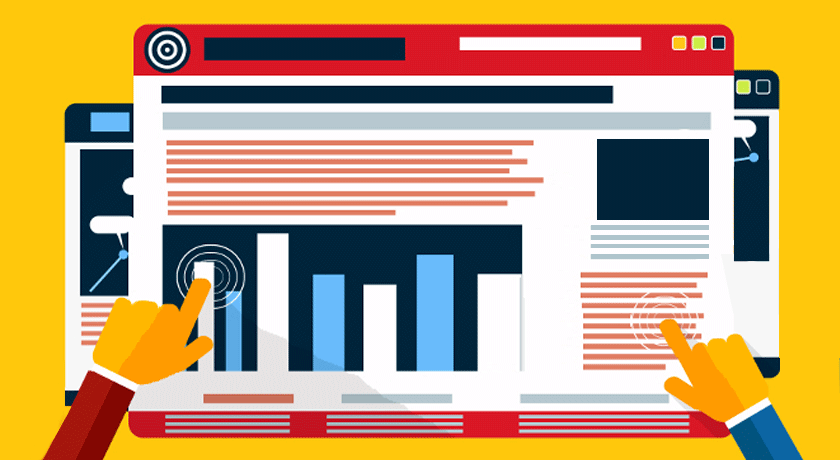Think Again: Highlighting And Underlining
Change of any kind starts with re-examining how we know things and re-evaluating assumptions. Adam Grant has many examples about questioning how we know things in his latest book, Think Again!. Sometimes thinking again saves lives, other times it saves time or mental effort, as in the case of learning [1].
If someone asks you about highlighting and underlining as effective learning techniques, what would be your reaction, "Yes, everyone does that in college" or "It obviously works because it notates the important and relevant part of the content" or "No, there are more effective ways to learn"?
In a large and recent review of the research, Kent State’s John Dunlosky and colleagues evaluated various learning techniques and found that two of the most common learning techniques, highlighting and rereading, are also some of the most inefficient ways to learn [2].
If these two were the least effective, which of these two activities would you recommend?
- Elaborative interrogation: generating an explanation for why an explicitly stated fact or concept is true
- Self-explanation: explaining how new information is related to known information, or explaining steps taken during problem-solving
- Summarization: writing summaries (of various lengths) of to-be-learned texts
- Highlighting/underlining: marking potentially important portions of to-be-learned materials while reading
- Keyword mnemonic: using keywords and mental imagery to associate verbal materials
- Imagery for text: attempting to form mental images of text materials while reading or listening
- Rereading: restudying text material again after an initial reading
- Practice testing: self-testing or taking practice tests over to-be-learned material
- Distributed practice: implementing a schedule of practice that spreads out study activities over time
- Interleaved practice: implementing a schedule of practice that mixes different kinds of problems, or a schedule of study that mixes different kinds of material, within a single study session
Turns out some of the most effective techniques were practicing (self-testing, quizzing, distributed practice) and self-explaining. Why is that? “This is a fundamental feature of how our minds work,” and as he explained, when we learn, “we're not just copying the information, we are making sense out of facts [3]." If sense-making is essential, let's explore one of the most effective sense-making techniques you can use in your learning design: reflections.
What Is A Reflection Activity And Why Would You Want To Include That In Your Learning Design?
Reflection is often viewed as an expansion of awareness, “to make learning more effective...to unearth erroneous assumptions and mistakes, and to identify and forestall unintended negative consequences (Marsick et al., 2017, p. 28) [4]."
In workplace learning, it might be more practical to think of reflections like researchers and HRD professionals, who most commonly focus on the individual meaning-making and sense-making processes (Lundgren et al., 2017) [4].
[...] reflection is central to adult learning theory and practice (Boud et al., 2006; Fenwick, 2008; Kolb, 2015; Mezirow, 1991, 2012). The reflection terminology used and how the process of meaning-making or sense-making is described, however, varies greatly, as pointed out by Jordi (2011) and reviewed in some depth by Roessger (2014) [4].
Reflection Is Inward Thinking
We live in a world of constant and rapid change. The skills, tools, and processes you learned yesterday may change tomorrow. That is why reflection, as a part of the learning culture, is important. Reflection is a process of asking powerful questions that leads to actions.
While more research is needed, we showed that reflection is closely linked to action and that it is especially valuable in these complex times where the environment is constantly changing.
Reflection supports meaning-making and sense-making, and as such, it helps guide actions toward organizational goals. Reflection also enables employees to explore their, and other's, thinking as they experiment with solutions, adjust actions, and reframe problems. The powerful combination of asking the right questions, re-examing assumptions, applying sense-making, reframing, and acting upon the results to adapt to change is fundamental to innovation.
But let's be practical. What does that mean for L&D? Does reflection mean open-text response in a course? How do we know they're correct?
Think About That!
When I suggest using open-ended, free-text questions in learning design (as opposed to multiple-choice questions), I often get the following objections:
- What if they don't type anything in it?
- What if they type in something inappropriate?
- How do we know if what they type in makes sense?
- What if they type the wrong answer in it?
- Doesn't thinking about what to type and typing actually take longer? We're already stretching the limit for the course.
- Why don't we just tell them what to do? It's already in the SOP.
If your stakeholders have similar objections, let's stop for a second to think! The objections from 1-4 have a common theme: trust. We don't trust our people to freely type in something. The objection is valid. Nothing holds back an employee from typing nonsense, typing nothing, typing something incorrect or absolutely inappropriate.
But...You trust your workforce to achieve their performance goals, to face the changing curve, to meet and exceed customer satisfaction, to plow through digital transformation, to live your company's credo, to achieve their absolute potential, etc., but you don't trust them typing something in a text box?
Think About That!
In this article, I'll make you think. Now, thinking takes time. Yes, objection #5 is valid as well. It does take time and effort to think and then type an answer. It takes significantly less mental effort to figure out the correct answer from 4 choices. But that's the point! Thinking, recall, and reflection require effort. But that effort can make learning sticky and application on the job more likely.
Assumptions
I'm part of a workforce development team, not an L&D team. Our goal is not to create engaging courses but to problem solve, simplify, innovate, scale, and accelerate what mechanisms work to empower our workforce to do their job better, faster, easier, or whatever the measure is.
Learning (as in training and courses) is part of our toolkit. However, we do not own learning. Learning happens in the brain. I can't make employees learn. I can use my expertise to create the conditions that are most effective for learning but learning itself is out of our control.
Therefore, we created a Shared Learning Responsibility model. It is like a social contract between our team and our audience. We own the conditions for learning. Our end of the contract requires us not to waste our audience's time, to go where they work rather than forcing them to another platform, to provide them guidance on how to grow their skills so they can make informed decisions. On their side of the contract is to take learning seriously, to actively participate and take charge of their development, to seek/sense/share to help others, to provide us feedback so we can improve.
We need to treat each other as partners in this effort—and partners trust each other. Even if opening up options may result in situations we need to address, like typing something in a text box.
The World Is A Scale
Think of solutions in the real world less as a choice between incorrect and correct rather than a scale. The question to ask is not whether it is correct or incorrect but rather how correct and how incorrect.
What does this mean? In a multiple-choice question, you provide the correct answer(s) and some distractors (representing incorrect answers). In the workplace, situations often do not have correct or incorrect answers. We often use incomplete data to make decisions, we prioritize, we mitigate risks, we plan our resources, fight fires, we use trade-offs, we compromise, etc.
We may not build the perfect solutions, even if we know how to do it. Let's say you decide to get fit and healthy. Based on your research, you should be able to run 10 miles daily. Today, you can barely walk 2 miles. However, you don't have time for a gym regime so you don't do anything.
There is a scale of solutions between doing nothing about a situation and doing the most effective thing. Where you land on this scale depends on many elements: your expertise, your network, your resources, timeline, budget, your company's culture, policies, etc. Start where you are. Use what you have. Do what you can.
Don't worry about ideal solutions on LinkedIn posts or even know-it-all comments telling you there's a much better way to do it—of course there is. If you spent two nights learning Excel for the Friday leadership meeting to present a pivot table, some might say it would have been so much better to use Power BI for visualization. At the same time, always have a long-term plan to develop your skills—skill level is not an excuse.
Addressing The Objections
If you don't trust your audience as partners and you'd rather treat them as "learners" who just need to do what you say, keep doing what you're doing. There's no point in changing anything if it's working for you. However, if you don't see the expected results from the long hours and effort that go into creating learning experiences, you may want to continue.
What's the purpose of your course? How do you measure the success of your course?
- Stop treating eLearning courses as a cheap content delivery system. Most of these courses are actually the worst way of delivering important information. Who goes back to the LMS months later to find that course that had something in the middle about this important decision you had to make? Go ahead, run a report.
Reflection Is More Than "Making Sense Of Content"
Up until now, we treated reflections as the opposite of multiple-choice questions with a ridged number of choices. But according to Mezirow (1991), reflections are not so simple. He differentiates between different types of reflections:
- Reflections without change to the fundamental ways we understand experiences; for example, reflecting on the content and how it can be applied to your role. This is what we explored in the context of eLearning above.
- Reflections that may cause us to question those basic understandings; for example, critical reflection examines the fundamental assumptions, beliefs, the mental models you're using to interpret the learning.
Reflective Practice
Reflective practice is the application of reflection to professional work for the purpose of decision-making, problem-solving, and development (aka learning). Reflective practice is beyond individual learning courses. It can take the form of note-taking, journal writing, multi-source feedback giving, coaching, and mentoring (Raelin, 2000).
There is a lot of buzz around learning in the workflow (or workflow learning). Some interpret this approach as reducing the distance between learning courses and the daily work employees do. An example of this is bringing courses to Slack or Teams where collaboration happens.
Another aspect of workflow learning is that working and learning are not two different activities of our lives. And so, reflections should not be isolated in the learning context, rather in the working context directly related to actions and decisions. By introducing the culture of reflection in learning you're blurring the lines of working and learning. This process starts with asking powerful questions. First, maybe about the content, then about how you learn, and finally, about others and the organization. This is beyond the L&D function. All parts of the organization must participate and promote this process.
Reflection often requires asking powerful questions and testing taken-for-granted assumptions.
When adapting reflective practices, one needs to keep in mind that the practices which use a critical reflection orientation can be challenging to the organization (Nicolaides & Poell, this Issue; Walker & Oldford, this Issue).
Reflective Learning
Reflective learning practices based on action learning (AL) support work-based learning. AL “tools” help peers learn by working together in diverse groups of non-experts on real tasks to gain new perspectives and learn to frame and solve challenges.
When you go beyond course-based individual learning, whether online or face-to-face, AL empowers a group of employees not only to solve complex problems but also to learn from each other in the context of real work. Social learning within the L&D community is often used as learning within the constraints of the LMS or an internal social media platform in a group setting. Reflective practices applied closer to the work can help reduce the application gap and increase the transfer.
Project-based learning, work-studies, case-studies, and artifact-creating projects are good examples of applying learning to work with a purpose.
Welcome To The Future: AI-Assisted Reflective Practices
Artificial Intelligence (AI) is an umbrella term encompassing a variety of cognitive technologies, ranging from less sophisticated forms like robotic process automation to more complex forms of Machine Learning that are increasingly prevalent in the fourth industrial revolution (4IR), changing the nature of work (Briggs & Buchholz, 2019; Schwab & Samans, 2018).
Generally, there are 3 major types of Artificial Intelligence we should consider depending on the human-AI degree of interaction:
- Assisted
For example, real-time monitoring of the health of a patient (e.g., glucose sensing devices for diabetes) is considered assisted intelligence, as the output of this activity assists medical staff to make informed decisions. - Augmented
Augmented intelligence can provide aggregated results from millions of scans combined with a patient's medical history to provide tailored insights for the radiologist. - Autonomous
Autonomous intelligence systems can not only produce insights but also execute them without human intervention.
Onboarding chatbots, AI-curated adaptive learning content, and real-time workflow decision-making tools are changing task-level activities no matter what role you support. This shift often requires a new skillset. Reskilling and upskilling have been on top of mind for leaders. According to the latest LinkedIn Learning Report, L&D's effort to pivot during the pandemic showed the value to the business [5]. Building on that momentum, L&D now has a unique opportunity to work cross-functionally with other parts of the organization to support the increased cognitive technology adoption and enable the associated workforce transition.
This may sound futuristic but it all starts with embracing the culture of reflection. Think about that!
References:
[1] Think Again: The Power of Knowing What You Don't Know
[3] LEARNING BY DOING: WHAT YOU NEED TO KNOW
[4] Various articles from Advances in Developing Human Resources 2020, Vol. 22(3)
- Overview: Why and How Does Reflection Matter in Workplace Learning? by Pierre Faller, Henriette Lundgren, and Victoria Marsick pp 248–263
- Workplace Reflection in the Age of AI: Materiality, Technology, and Machines by Lyle Yorks, Denise Rotatori, SeoYoon Sung, and Sean Justice pp 291–307
- Adapting Action Learning Strategies to Operationalize Reflection in the Workplace by Pierre Faller, Victoria Marsick, and Cynthia Russell pp 308–319
[5] 2021 Workplace Learning Report








